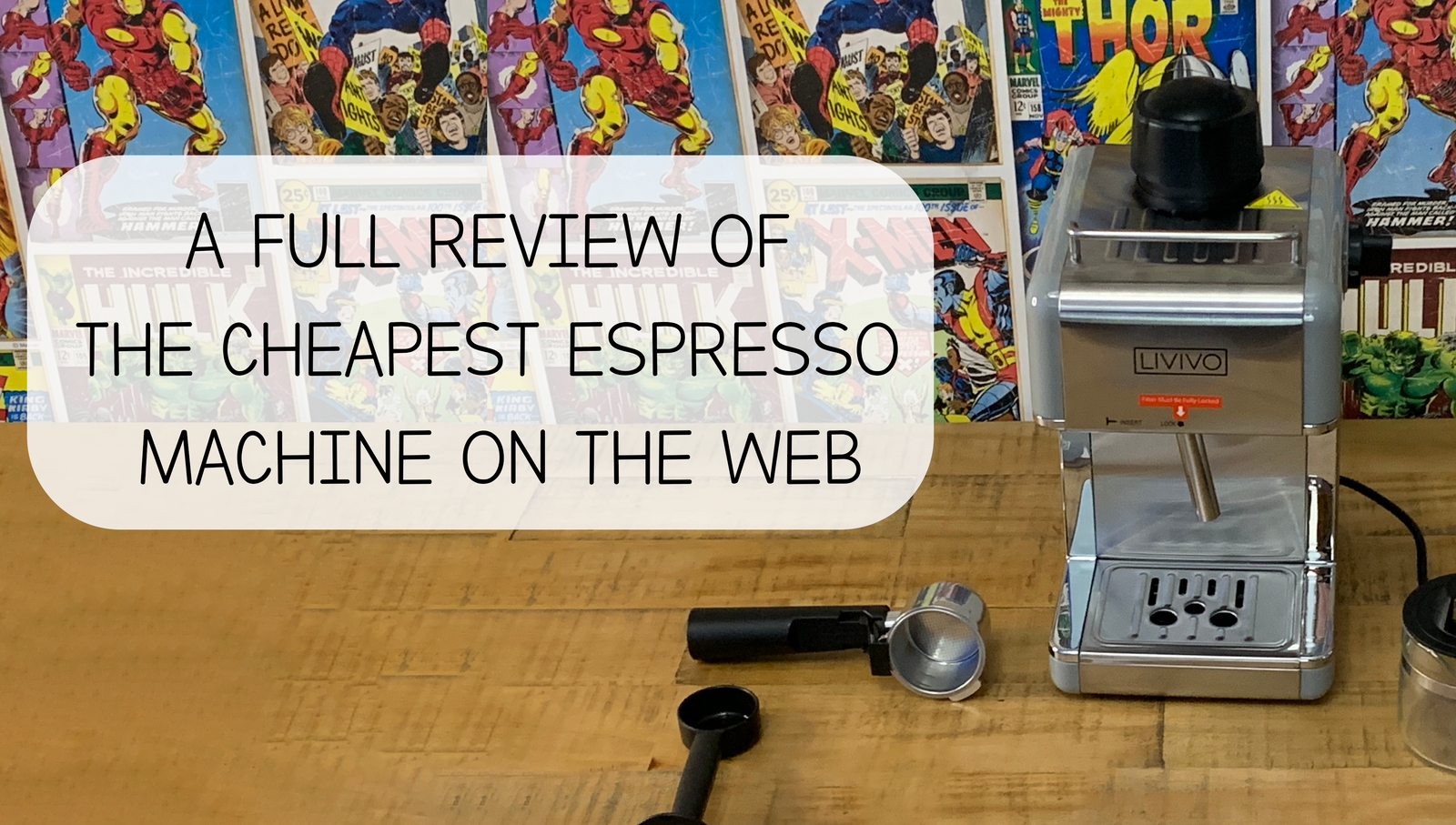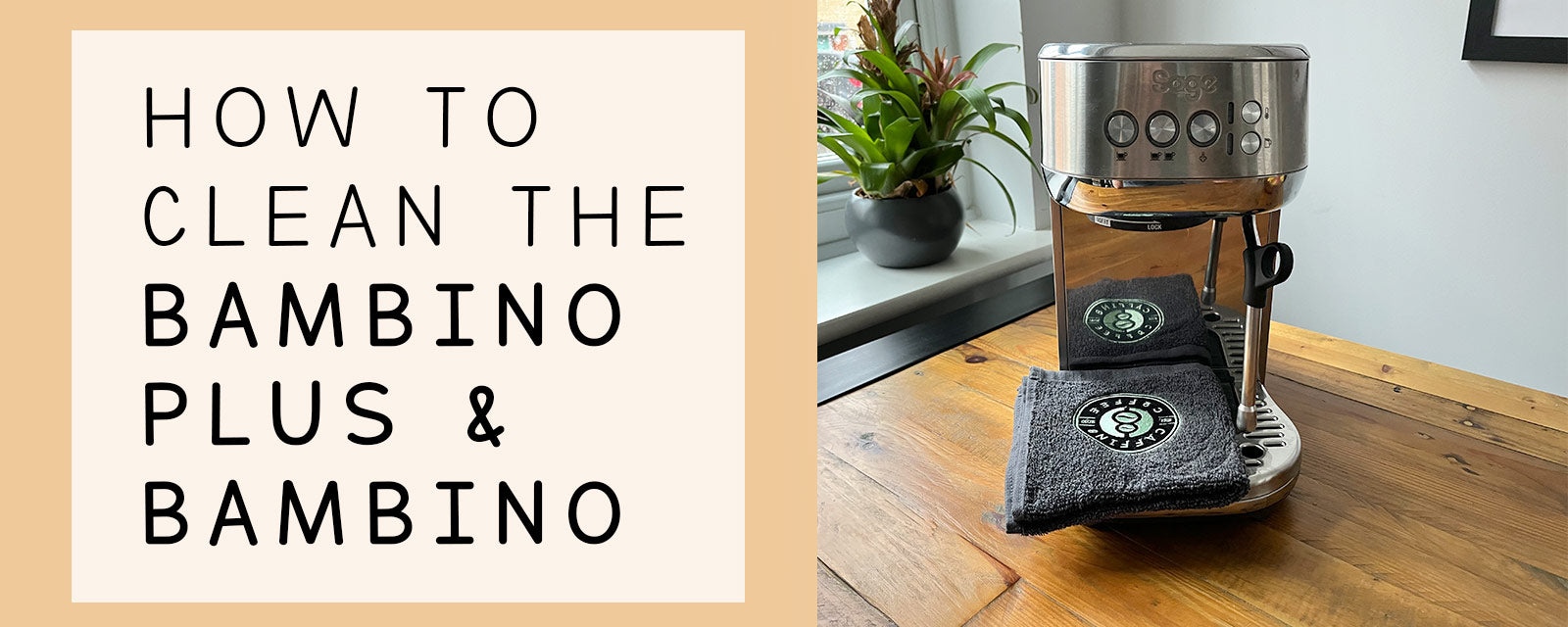
I’ve been the proud owner of a Sage/Breville Barista Express coffee machine for about 4 years now. However recently I’ve had the opportunity to switch my Express for aBarista Touch after having lived with it for some time I’ve realised that despite a similar appearance there are actually a lot of differences - Some good - Some bad - I think that each machine is suited to a different person based on how they are going to use it. Let me explain…
The first thing to know about both the Barista Express and the Barista Touch is who makes them. In the UK they are marketed under the brand name “Sage (by Heston Blumenthal)” but around the rest of the world they are marketed as “Breiville” - All you need to know is that Sage and Breville are exactly the same, but Sage appliances will likely have a UK plug whereas Breville will have plugs for their specific market (America, European.. etc).
I highly recommend reading through the rest of my article below as I’ll go into some details on each of the differences below and help you gauge what those differences mean and if they are worth the price difference.
…But just to summarise…
The main differences between the Sage/Breville Barista Express and Barista Touch:
- Price* - Express = £600/€650/$749 - Touch = £1000/€999/$1099
- Size - Dimensions are roughly the same
- Boiler - Express = Thermoblock - Touch = Thermojet
- Grinder = Same on both machines
- Interface - Express = mainly buttons - Touch = Screen for everything but grind
- Drip tray - Slightly smaller on express to allow for milk sensor
- Milk frother/Steam Wand - Express = Manual only, single stream - Touch = Automatic and 4 stream + manual mode
- Water tank capacity = Same on both machines
- Position of hot water spout - Express = next to steam wand - Touch = in the middle
*Prices change throughout the year - See bottom of our article to find what they’re currently selling for
Now I understand the above might make it seem like the Sage/Breville Barista Touch is just a better, more expensive machine but it really isn’t that simple. Let me take you through the differences in detail and you can then decide which machine is right for you.
Is the touch screen a gimmick?

I won't go into too much detail on setting up and using or cleaning these machines because I’ve already written a pretty detailed guide for both:
- How to set up and use the Barista Express
- How to set up and use the Barista Touch
- How to clean the Barista Express
- How to clean the Barista Touch
But what you do need to know is what the introduction of a touch screen does to the way you interact with the machine.
The first thing you notice coming from a Barista Express to a Barista Touch is how much the coffee machine will hand-hold you through every process. This is great for a beginner; and to be honest it’s pretty reassuring for a coffee machine veteran too!
For example when it’s time to clean the machine it literally walks you through each step and you press the “next” button every time you’ve finished doing that step. For the Sage/Breville Barista Express you either need to come and read my article, or get the chunky user manual out to follow the steps.
The thing is, if you actually take the Barista Express apart; you realise that the only adjustment/button that is mechanical is the grind side (which is the same for the Touch). All the other buttons on the Barista Express are digital.
For example the steam wand/hot water lever on the side of the machine is just connected to an electrical on/off swivel switch; if you point it one way it sends a signal to the CPU to turn on the steam and if you turn it the other way it sends a signal to send hot water.
Although these buttons are really just sending a digital signal; there is something to be said about the feeling of pressing a button and knowing that something is going to happen.
With a touch screen you can wonder if the screen is frozen or if it just didn’t recognise your touch...By the way, the Barista Touch has not frozen on me yet. Whenever I press the screen and nothing happens it’s just a case of me pressing it again and it works just fine (I always struggle with touch screens; especially those massive ones you get in McDonalds for making an order!)

Having the option of setting up your individual drinks appears to be a novelty at first however I can think of a good reason to have it. If you have a regular guest (for example your mother-in-law) and they like their coffee a specific way, then you can save the preset so that next time they are around you can collect the bonus points for remembering exactly how they take their coffee!

The other thing that the Barista Touch offers over the Barista Express is the feeling of control for each element of the process of making the coffee.
For example, if you would prefer a slightly longer extraction time (I.e you want more water to pour through your coffee, then you can simply click the “brew” button within the drink setting and change the number of seconds and bingo, you have a longer extraction for that cup.
However on the Barista Express you would need to use the program button to reprogram the extraction time, which means using a stopwatch to time your extraction and set it.

With the inclusion of the touch screen on the Barista Touch you lose the pressure gauge which means there is no way to see how much pressure is running through the coffee. On the Barista Express you get a manual pressure gauge and it’s extremely satisfying seeing the needle point to 12 o’clock when you get a good extraction.
The feedback is also extremely useful to know if you’ve got your grind setting correct (i.e have you got the coarseness right). It’s not a deal breaker but I would certainly say the pressure gauge on the Barista Express is much more intuitive.
Different internal boiler systems
One of the major differences on the inside of these machines is their boiler. The boiler is the part of the machine that heats the water; sending it to either the brew head, hot water outlet or the steam wand.
The Sage/Breville Barista Express has a “thermoblock” boiler. This is a physically larger boiler which takes some more time to get hot (About 30 seconds); however it retains the heat well and so it’s quicker to reheat if you make another coffee within the hour.
The Sage/Breville Barista Touch has a “thermojet” boiler. This boiler gets hot almost instantly and is heated each time a shot is poured. So when you press the “brew” button to pour a shot, it will show a message “heating” for about 3 seconds and then begin to pull the shot. Essentially this means it’s a lot quicker to make your coffee in the morning.
Is the Touch’s automatic milk frother/steam wand any good?
One of the biggest differences in how you use the Barista Touch vs the Barista Express is the operation of the steam wand for frothing milk. Bear with me on this one as it could be one of the largest deciding factors for you between the two coffee machines; unfortunately it’s not as simple as “one is better than the other”.
To start, and most easily, the Sage/Breville Barista Express has a manual steam wand. It is either on or off and has a single hole for the steam to come out of, the touch has four holes.
The simple operation of the Barista Express is perfect for someone who wants to get more hands on with steaming their milk. I also find that due to the ball-joint at the top of the wand, it’s a lot easier to find a comfortable position to hold the milk jug as you steam the milk. By contrast, the Barista Touch’s steam wand can only move directly forwards or backwards.

For the Sage/Breville Barista Touch you have a manual mode, but as I just mentioned there are less options for adjustment in terms of how you can hold the milk jug relative to the machines. You also have an automatic mode.
In order to understand what automatic mode really means you need to understand the variables of steaming milk. Realistically when steaming milk you are controlling two things; how hot the milk is and how frothy (how much air) is in it.
The Barista Touch allows you to choose the temperature in multiples of 5 degrees, as well as choosing how frothy the milk is on a scale of 1 to 10. The great thing about this is that you can set this for each drink type so that the machine will always remember how frothy you like your cappuccino.
In order to run the automatic mode, you simply put milk in the jug and put the jug under the steam wand. The drip tray has a small section that has a sensor built into it so that it can detect the temperature. You simply press “steam” and off it goes steaming the milk to your preference.
Although the automatic milk is good and very convenient, I don’t think you can really compare it to great manually steamed milk.
The other feature that the Barista Touch has, is that it will auto-purge once you have finished making the milk. Essentially this cleans the inside of the wand out from any milk that has gone inside. You can easily do this on the Barista Express by turning the wand on and back off after use. However the fact the Touch does this for you certainly helps you to not forget.
Finally, due to the “thermojet” boiler (see the sections on boilers above), in the Sage/Breville Barista Touch, the steam is ready to go instantly. With the Barista Express you do need to wait a few seconds (probably about 10 seconds) for it to start producing steam.
Additional feedback, warnings and messages from the machine
There are a few other features of the Barista Touch that are worth mentioning. None of these would make me choose the Barista Touch over the Barista Express per-se but they are pretty helpful and perhaps might sway your decision if its a close call.
Water tank - When the water tank is getting low you get a message on the screen. It gives enough of a warning that your drink will be able to finish being poured. On the Barista Express you need to keep any eye on your water level or you run the risk of it pulling air through the system.
Grind size - As you adjust your grind size on the Barista Touch it shows you the size on the screen which makes it easier than craning over the side of the machine to read the number.
Hot water outlet - The hot water outlet is positioned at an angle above where your cup sits for the express - this means that when you make a “long black”, you simply leave your cup where it is and it pours the water and brews the coffee with just one button. On the Barista Express the hot water is over to the right hand side so you need to move the cup.
On screen feedback -Most of the functions give feedback during or after operation. For example if you brew a coffee it counts the extraction time (so that you can change the setting should you not get the best result) and also beeps to say it's done.
Choosing your colour
Both the Barista Express and the Barista Touch come in a variety of colour options. Recently I have noticed that the range of choices available has decreased in the UK; for example I don’t often see the red colour Barista Express anymore.
When I came across a white Barista Touch I thought I was really lucky as it’s quite a rare colour; however there is something you HAVE TO BE AWARE OF, with the non-stainless steel machines and that is they scratch/chip very easily.
They always tend to get scratches and chips around the base of the drip tray. As you can see on my Barista Touch below. This is also extremely common on the black painted Sage/Breville coffee machines too.

The stainless/brushed steel coffee machines do scratch as well, however because there is no paint the scratches are a lot less obvious.
Having said that; the colour of the machine does add some personality and does look nice in the kitchen!

Final Verdict and where to purchase yours
You are quite right if you are scratching your head after this, wondering “which machine should I buy”. Although there are clear differences in the Barista Express and the Barista Touch, it’s not very clear what they should mean to you.
There is about a £400/€400/$500 difference between the two coffee machines depending on the time of year and any discounts that are being run. Which I imagine is the same cost as a cheap iPad; and the touchscreen on the Barista Touch is not as useful as an iPad.
However I think the easiest way to decide if the extra money is worth the differences are to consider 3 questions:
- Do you really need a coffee machine to heat up instantly or do you have a spare couple of seconds to wait?
- Do you really want the coffee machine to remember preferences for each drink type?
- Do you really want to be less hands-on with the machine (Using the automatic features)?
If the answer to all three of the above is a resounding yes, then the Sage/Breville Barista Touch is the machine for you. However if you are less fussed about the above and it just sounds like a nice to have, then the Barista Express is going to be perfect for you. It is after-all, the most popular home-espresso machine in the world!
Below are a few options on where to purchase your machine. The price is the same to you but if you do decide to purchase after clicking our link we earn a VERY SMALL commission. It really helps us continue to write these articles - so we’d really appreciate it if you would use our link if you do decide to buy a Barista Express or a Barista Touch:
Buying in the US?:
The Barista Touch on Amazon.com
The Barista Express on Amazon.com
Buying in the UK?:
The Barista Touch on Amazon.co.uk
The Barista Express on Amazon.co.uk





Dor
January 23, 2023
Hey,
Could you make a comparison between the machines: Oracle Touch and Barista Touch?
There is a lot of uncertainty and misunderstanding about the difference between these two Braville\Sage coffee machines.
Thanks,
Dor